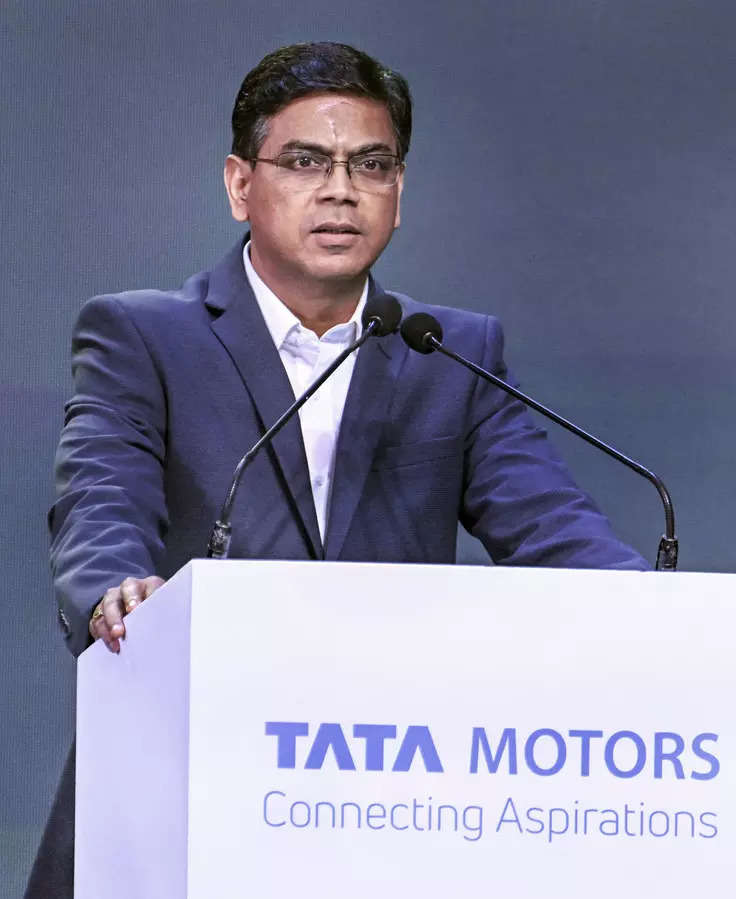
New Delhi: The commercial vehicle industry is expected to grow in double-digits this fiscal, driven by favourable demand conditions amid accelerated economic activities, although high fuel prices and increase in interest rates on vehicle loans are headwinds, according to Tata Motors Executive Director Girish Wagh. The commercial vehicles segment, which saw its peak in 2018-19, with industry volumes of over 10 lakh units, went into a downturn in the following two fiscal years, has begun to pick up momentum from the last financial year.
While it may take longer to reach the highest volumes again, in terms of payload, the industry could reach the previous peak sooner amid rising demand for commercial vehicles (CVs) with higher payloads.
“I think last year, the economy started doing well again and we saw growth in the commercial vehicle market by around 26 per cent. We (Tata Motors) have grown by 33 per cent. We have done better than the industry,” Wagh told PTI.
In the context of the last three years, he said, “FY19, was our previous peak, when the commercial vehicle industry volumes crossed 1 million (units). After that, we have had two years of downtime. FY20, which was the year of preparing for BS-VI transition and FY21, which was the year of COVID, if I may say so. In both these years, the market dropped and FY21 volumes were almost 52 per cent of FY19 volumes.”
Responding to a query on the overall situation in the CV industry, he said, “We do see the industry coming back. It may take some more time to reach the previous peak in terms of volume but at the same time, I think in terms of payload, we should reach that earlier, because higher payload vehicles are being sold more today as compared to FY19.”
This, he said, is due to demand for CVs generated due to the work which is happening in infrastructure propelled by the government’s allocation for the sector earmarked in the Budget.
“Then a lot of work is happening in the housing sector in urban areas. Consumption overall is going up and the rural growth story is intact. All these put together, I do see that the commercial vehicle industry should see a good growth this year,” he said.
When asked what could be the rate of growth, he said, “We should see double-digit growth this year also.”
As for Tata Motors, he said the target is to do better than the industry like it did last year.
Wagh, however, said it wouldn’t be a totally smooth ride for the CV industry.
“Needless to say, there are some headwinds. Whether it is fuel price inflation or the interest rates that are going up, which will increase the EMI for the customers,” he said.
On the positive side, he said, “over the last few months, the freight rates are also firming up. It is a function of demand and supply and if freight transportation requirements are there, then I’m sure the utilisation of rates will go up, fleets will go up, and people will come forward and buy the vehicle. So this year should also be a good year, as it has been the last over the previous year.”
Commenting on the impact of rising commodity prices, Wagh said it has been unprecedented.
“Steel price increase, the way it has happened, is mind boggling. In commercial vehicles, the impact of steel price increase is pretty high because almost 45 per cent of our cost structure gets impacted immediately directly with steel. So impact has been pretty high,” he said.
Tata Motors has been trying to pass on the cost increases through price increases of its vehicles, he said adding, “we took price increase almost every quarter last year but it has not been sufficient to pass on to negate the remaining impact. We have been pushing our cost reduction efforts.”
When asked how many rounds of price hikes would be required for the company to fully offset the impact of increased commodity costs, he said, “It depends on the percentage increase that you take. Finally, what is important is how do we get our margin profile back. That’s what we’re looking at and we’re working on a comprehensive margin improvement program.”
Also Read:














